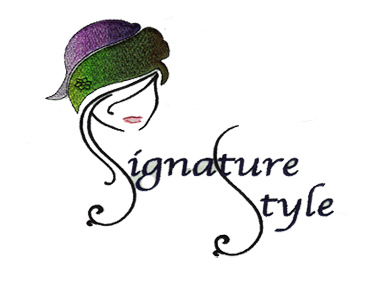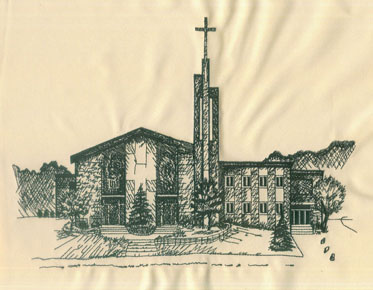From Pixels to Stitches: A Guide on How to Turn JPG into Embroidery
Embroidery has evolved from a traditional craft to a dynamic blend of art and technology. Converting a digital image, such as a JPG file, into an embroidery design opens up a world of creative possibilities. In this blog, we'll explore the step-by-step process of transforming a JPG into embroidery, demystifying the art of digitization, and bringing your digital visions to life through the tactile beauty of stitches.
Understanding the Basics
Embroidery digitization is the process of converting a digital image into a format that an embroidery machine can interpret and stitch onto fabric. When starting with a JPG file, which is a common and widely used image format, the digitization process involves translating the visual elements into a language of stitches.
Step-by-Step Guide on How to Turn
JPG into Embroidery
- Choose a High-Quality
Image:
Begin by selecting a high-resolution JPG image. The clarity and details in the original image will significantly impact the quality of the final embroidery. If possible, choose an image with well-defined lines and distinct color contrasts to enhance the digitization process. - Image Editing
(Optional):
If needed, perform basic edits on the JPG image to enhance its suitability for embroidery. Adjustments such as cropping, resizing, or increasing contrast can help optimize the image for a cleaner and more accurate conversion. - Select Digitization
Software:
Invest in or access embroidery digitization software. There are various programs available, each with its features and capabilities. Some popular choices include Wilcom, Pulse, and Hatch Embroidery. Choose software that aligns with your skill level and the complexity of the project. - Import JPG into
Digitization Software:
Open your chosen digitization software and import the JPG file. Most software allows you to import common image formats, and once loaded, you'll see the image displayed on the workspace. - Set Design Dimensions:
Determine the desired dimensions of the embroidery design. Consider the size of the fabric or garment onto which the design will be stitched. Setting the dimensions helps maintain proportionality and ensures that the final embroidery fits seamlessly onto the intended surface. - Trace the Image:
The digitization process involves manually tracing the elements of the JPG image to create a stitch pattern. Depending on the software, there are tools that allow you to trace lines, shapes, and contours. Trace the image's major features to establish the embroidery's basic structure. - Define Stitch Types:
Different elements of the design may require varying stitch types. For instance, satin stitches work well for filling larger areas, while running stitches are suitable for outlining. Experiment with stitch types to achieve the desired texture and visual effect for each part of the design. - Adjust Stitch
Parameters:
Fine-tune the digitized design by adjusting stitch parameters such as density, length, and underlay. These adjustments ensure that the stitches are appropriately spaced, providing the necessary structure and stability to the embroidery. Pay attention to details, as the success of the final result often lies in these refinements. - Color Assignment:
Assign colors to different elements of the design. This step is crucial for creating a visual guide for the embroidery machine and ensures that the final result reflects the color scheme of the original JPG image. Some software allows for easy color assignment through a user-friendly interface. - Preview the Design:
Before finalizing the digitization, use the software's preview function to assess how the embroidery design will appear once stitched. This step allows you to identify any potential issues and make additional adjustments if necessary. - Save the Digitized File:
Once satisfied with the digitization, save the file in a format compatible with your embroidery machine. Common formats include DST, PES, and EXP. Consult your machine's user manual to determine the preferred file type. - Load the File onto the
Embroidery Machine:
Transfer the digitized embroidery file to the embroidery machine using a USB drive or the method specified by your machine's manufacturer. Ensure that the machine is properly threaded and that the fabric is securely hooped. - Embroider the Design:
With the digitized file loaded, initiate the embroidery process on the machine. Monitor the stitching progress to address any issues promptly. The machine will follow the stitch pattern created during the digitization process, bringing the JPG image to life in thread and fabric. - Finishing Touches:
Once the embroidery is complete, remove the fabric from the machine and carefully trim any excess threads. If necessary, secure the back of the embroidery to prevent loose threads and enhance the overall durability of the design.
Tips for Successful JPG to
Embroidery Conversion
- Start with a Clear and
High-Resolution Image:
The quality of the original JPG file directly impacts the clarity and detail of the embroidery. Choose images with crisp lines and well-defined features. - Simplify Complex
Designs:
Complex designs may not translate well into embroidery, especially for beginners. Start with simpler images and gradually progress to more intricate designs as you gain experience. - Experiment with Stitch Types:
Familiarize yourself with different stitch types and their applications. Experimenting with stitch types allows you to achieve varied textures and visual effects in your embroidery. - Regularly Preview the
Design:
Use the preview function in your digitization software regularly. Previewing helps catch potential issues early in the process, allowing you to make adjustments before the actual embroidery. - Practice Patience:
Embroidery digitization is both an art and a skill that improves with practice. Be patient, embrace the learning curve, and don't hesitate to refine your skills through trial and error.
Conclusion: Bringing Images to
Life with Stitches
Converting a JPG
into embroidery is a captivating process that
melds digital artistry with the tactile beauty of stitches. As you navigate the
steps of selecting, digitizing, and embroidering your chosen image, remember
that each stitch contributes to the transformation of a digital concept into a
tangible and visually appealing masterpiece. With practice and a keen eye for
detail, you'll unlock the full potential of turning JPGs into embroidered works
of art that reflect your creativity and passion for the craft. Happy stitching!



